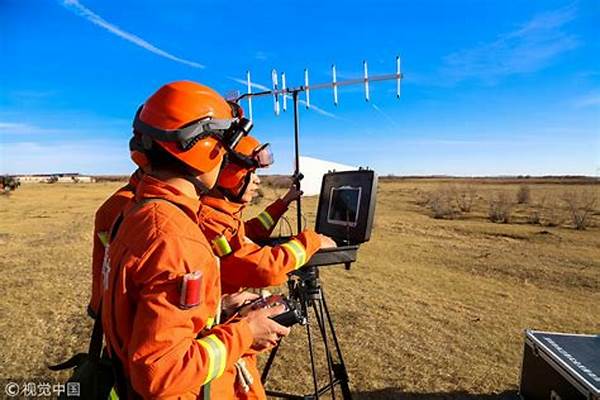In an increasingly interconnected world, disasters often transcend national boundaries, requiring countries to collaborate on cross-border disaster response efforts. These collaborations are crucial in addressing the complex challenges posed by disasters that affect multiple nations. Global cooperation and swift action can significantly mitigate the impact of such disasters, ensuring that affected populations receive timely assistance and resources.
The Importance of International Collaboration
International collaboration in cross-border disaster response efforts is vital for several reasons. Firstly, disasters such as pandemics, earthquakes, and tsunamis have no regard for national borders and can impact multiple countries simultaneously. Effective coordination among nations ensures a combined and efficient response. Secondly, resource pooling is essential, as no single country may have adequate resources to address large-scale disasters on its own. Finally, sharing expertise and best practices enhances the global capacity to respond to disasters, allowing nations to learn from each other and improve their response mechanisms.
In the context of cross-border disaster response efforts, joint exercises and training programs among nations play a crucial role. Such initiatives prepare countries to work together seamlessly when a disaster occurs. By having predetermined protocols and established communication channels, the international community can respond more swiftly and effectively. Additionally, these collaborations foster mutual trust and understanding, which are fundamental for successful cross-border initiatives. The lessons learned from past responses often inform future strategies, leading to continuous improvement in disaster management and resilience.
Challenges in Cross-Border Disaster Response
One significant challenge in cross-border disaster response efforts is the coordination of diverse international agencies and governments, each with its protocols and priorities.
Another challenge is the logistical complexity of moving resources and personnel across borders quickly enough to make a meaningful impact.
Cultural and linguistic differences can also impede communication and collaboration during cross-border disaster response efforts.
Ensuring equitable access to resources for all affected regions poses another challenge, as geopolitics can influence the distribution of aid.
Finally, reconciling different laws and regulations regarding disaster management is a continual hurdle for agencies involved in cross-border disaster response efforts.
Case Studies: Lessons Learned
Several case studies exist that highlight the successes and setbacks of cross-border disaster response efforts. The joint response to the 2004 Indian Ocean tsunami by countries bordering the affected areas serves as a prime example of effective cross-border collaboration. Nations came together to provide immediate relief and long-term support, showcasing the power of international solidarity. In contrast, the complexities observed during the Ebola outbreak in West Africa highlighted some of the barriers to seamless cross-border cooperation, such as differing health regulations and inadequate infrastructure.
The strengths observed in these cross-border disaster response efforts included rapid mobilization of resources, streamlined communication channels, and a clear division of responsibilities. However, the weaknesses revealed a need for more comprehensive preparedness plans that incorporate all participating nations. This includes better integration of non-governmental organizations and local communities, which play a crucial role in on-the-ground operations. These insights stress the importance of continual refinement of strategies to enhance cross-border disaster response capabilities.
Strengthening Frameworks for Better Outcomes
To enhance the efficacy of cross-border disaster response efforts, existing frameworks need reinforcement through strategic policymaking and international agreements. Establishing standardized response protocols that all participating countries adhere to can significantly reduce response times and increase coordination efficiency. Investment in technology that facilitates real-time information sharing between nations is also a crucial aspect of modernizing disaster response strategies.
Furthermore, financing mechanisms that provide resources for cross-border disaster response efforts should be robust and sustainable. This involves the participation of international financial bodies in funding disaster preparedness initiatives. Consideration of the socio-economic and environmental impacts should guide the creation and implementation of these frameworks, ensuring that they address not just immediate needs but also long-term resilience and recovery.
The Role of Technology and Innovation
The integration of technology and innovation plays an essential role in cross-border disaster response efforts. Advances in satellite imagery, artificial intelligence, and data analytics provide valuable tools for monitoring disasters in real-time, enabling faster and more accurate assessments of affected areas. The use of digital platforms for coordinating international aid and logistics can streamline processes, reduce delays, and ensure that aid reaches those most in need promptly.
Moreover, technology allows for better risk assessment and early warning systems, significantly enhancing cross-border disaster preparedness. Nations can leverage these technological advancements to forecast potential risks and implement preemptive measures, minimizing the impact of disasters. Innovation in disaster response also includes the development of resilient infrastructure and adaptive strategies to combat climate change, thereby reducing vulnerability to future disasters.
Future Directions for Cross-Border Efforts
Looking ahead, building resilient partnerships remains the cornerstone of effective cross-border disaster response efforts. These efforts should focus on fostering inclusive collaborations that engage all stakeholders, including governments, civil society, and the private sector. Strengthening community resilience through education and capacity-building initiatives is also vital, as local communities are the first responders in any disaster.
Additionally, cross-border disaster response efforts should prioritize sustainability and adaptability, taking into account the evolving nature of global risks. As the frequency and intensity of natural disasters increase due to climate change, an adaptive approach is essential to ensure preparedness and response capabilities remain effective. Ensuring transparency and accountability in all processes will also bolster public confidence and support for cross-border disaster initiatives.
Conclusion
In conclusion, cross-border disaster response efforts are indispensable in addressing the multifaceted challenges posed by global disasters. Comprehensive international collaboration, underpinned by strong frameworks and innovative technology, is essential in ensuring effective and equitable disaster response. Continued investment in capacity-building and resilience measures will enhance the ability of nations to respond rapidly and efficiently, ultimately safeguarding lives and livelihoods worldwide.
Cross-border disaster response efforts are most effective when founded on mutual trust, respect, and shared goals. As the international community continues to face unprecedented challenges, the importance of unified, anticipatory actions cannot be overstated. Only through concerted efforts can the global community successfully navigate the complexities of cross-border disasters and emerge stronger and more resilient.





